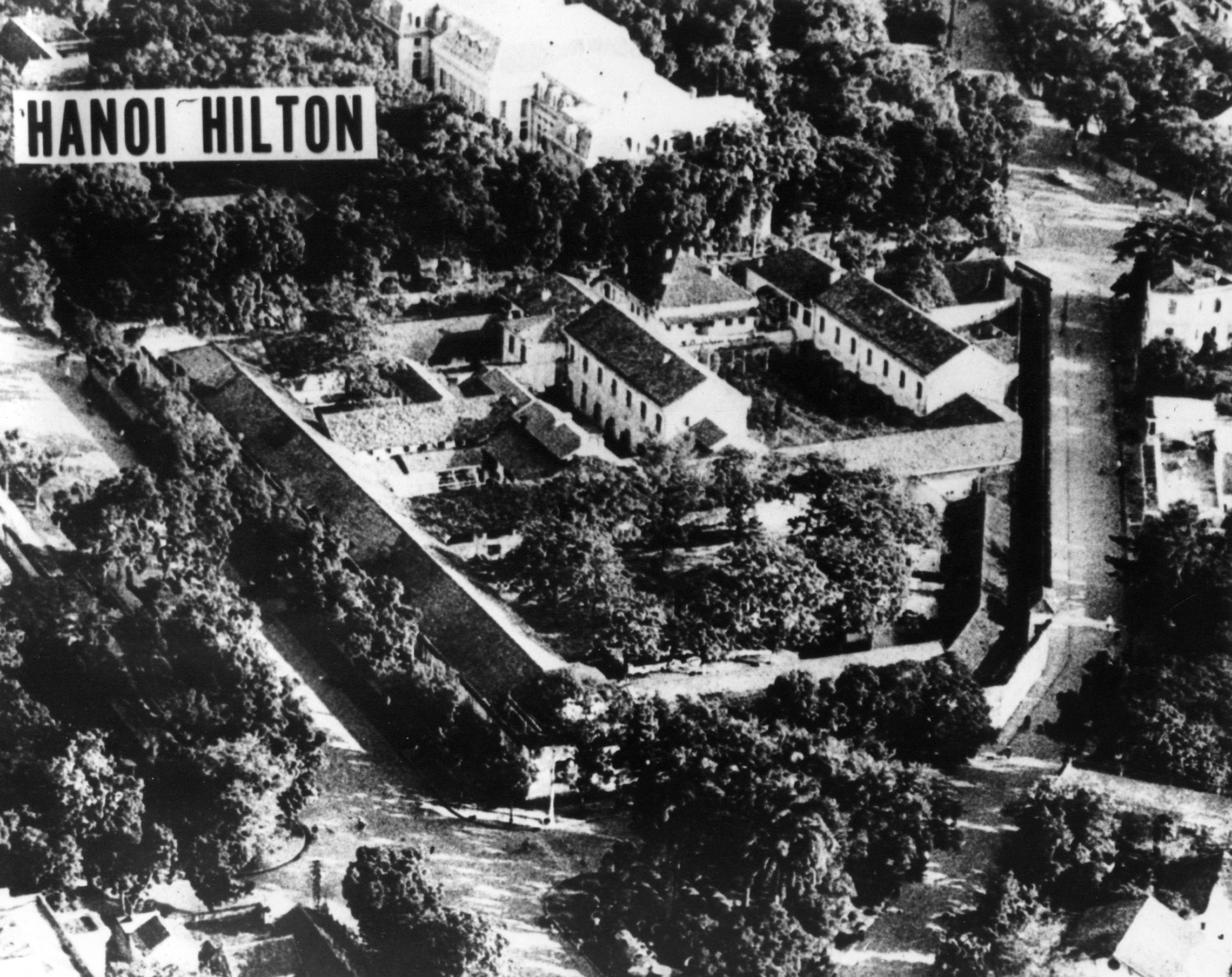|
Hỏa Lò Prison
Hỏa Lò Prison (, Nhà tù Hỏa Lò; french: Prison Hỏa Lò) was a prison in Hanoi originally used by the French colonists in Indochina for political prisoners, and later by North Vietnam for U.S. prisoners of war during the Vietnam War. During this later period, it was known to American POWs as the "Hanoi Hilton". The prison was demolished during the 1990s, although the gatehouse remains as a museum. French era The name Hỏa Lò, commonly translated as "fiery furnace" or even "Hell's hole", pp. 67–68. also means "stove". The name originated from the street name phố Hỏa Lò, due to the concentration of stores selling wood stoves and coal-fire stoves along the street in pre-colonial times. The prison was built in Hanoi by the French, in dates ranging from 1886 to 1889 to 1898 p. 52. to 1901, when Vietnam was still part of French Indochina. The French called the prison ''Maison Centrale'', 'Central House', which is still the designation of prisons for dangerous or ... [...More Info...] [...Related Items...] OR: [Wikipedia] [Google] [Baidu] |
Everett Alvarez Jr
Everett Alvarez Jr. (born December 23, 1937) is a former United States Navy officer who endured one of the longest periods as a prisoner of war (POW) in U.S. military history. Alvarez was the first U.S. pilot to be shot down and detained during the Vietnam War and spent over eight years in captivity, making him the second longest-held U.S. POW, after U.S. Army Colonel Floyd James Thompson. Early life and captivity Alvarez was born in 1937 in Salinas, California. He is the grandson of immigrants from Mexico. He went to Santa Clara University on an academic scholarship. He joined the United States Navy in 1960 and was selected for pilot training. On August 5, 1964, during Operation Pierce Arrow, LTJG. Alvarez's Douglas A-4 Skyhawk was shot down in the immediate aftermath of what is known as the Gulf of Tonkin incident. Alvarez endured eight years and seven months of brutal captivity by the North Vietnamese at the Hỏa Lò Prison (sarcastically known as the "Hanoi Hilton" by ... [...More Info...] [...Related Items...] OR: [Wikipedia] [Google] [Baidu] |
The New York Times Magazine
''The New York Times Magazine'' is an American Sunday magazine supplement included with the Sunday edition of ''The New York Times''. It features articles longer than those typically in the newspaper and has attracted many notable contributors. The magazine is noted for its photography, especially relating to fashion and style. Its puzzles have been popular since their introduction. History Its first issue was published on September 6, 1896, and contained the first photographs ever printed in the newspaper.The New York Times CompanyNew York Times Timeline 1881-1910. Retrieved on 2009-03-13. In the early decades, it was a section of the broadsheet paper and not an insert as it is today. The creation of a "serious" Sunday magazine was part of a massive overhaul of the newspaper instigated that year by its new owner, Adolph Ochs, who also banned fiction, comic strips and gossip columns from the paper, and is generally credited with saving ''The New York Times'' from financial ru ... [...More Info...] [...Related Items...] OR: [Wikipedia] [Google] [Baidu] |
Third Geneva Convention Of 1949
The Third Geneva Convention, relative to the treatment of prisoners of war, is one of the four treaties of the Geneva Conventions. The Geneva Convention relative to the Treatment of Prisoners of War was first adopted in 1929, but significantly revised at the 1949 conference. It defines humanitarian protections for prisoners of war. There are 196 state parties to the Convention. Part I: General provisions This part sets out the overall parameters for GCIII: * Articles 1 and 2 cover which parties are bound by GCIII * Article 2 specifies when the parties are bound by GCIII ** That any armed conflict between two or more "High Contracting Parties" is covered by GCIII; ** That it applies to occupations of a "High Contracting Party"; ** That the relationship between the "High Contracting Parties" and a non-signatory, the party will remain bound until the non-signatory no longer acts under the strictures of the convention. "...Although one of the Powers in conflict may not be a p ... [...More Info...] [...Related Items...] OR: [Wikipedia] [Google] [Baidu] |
